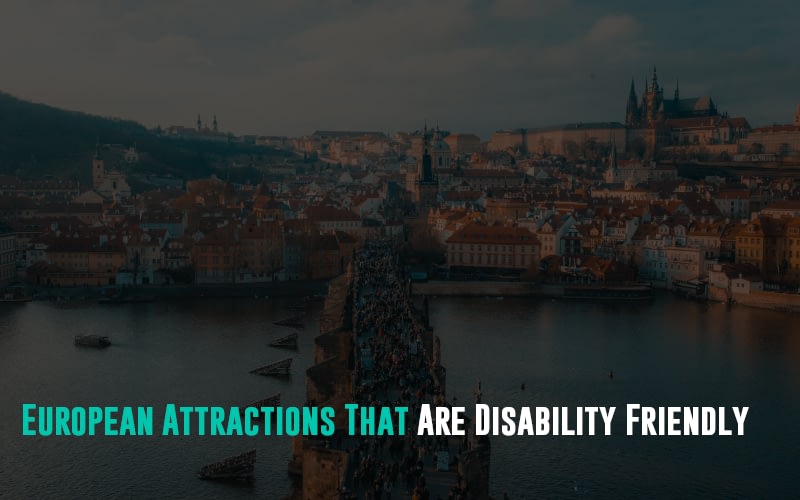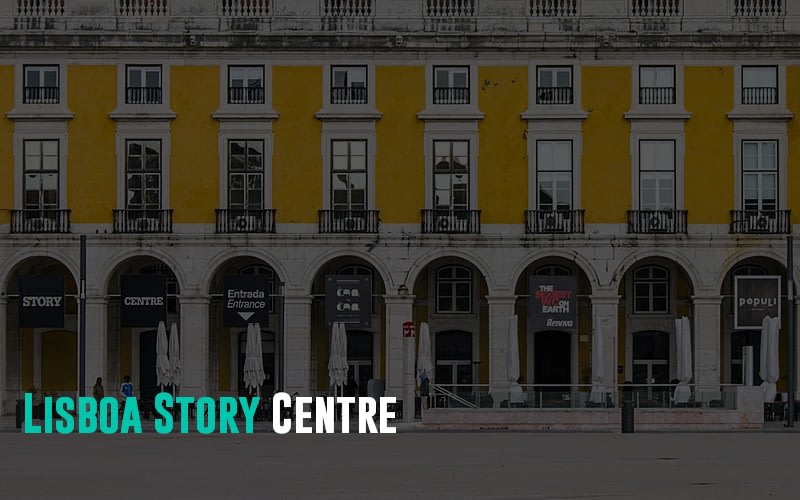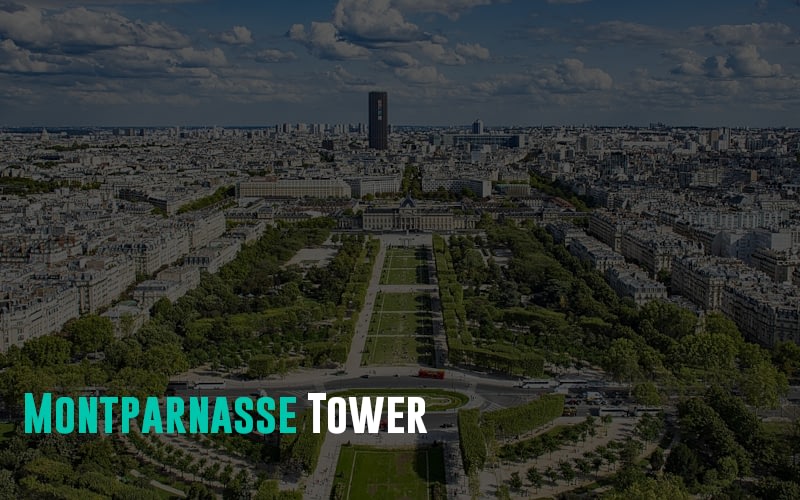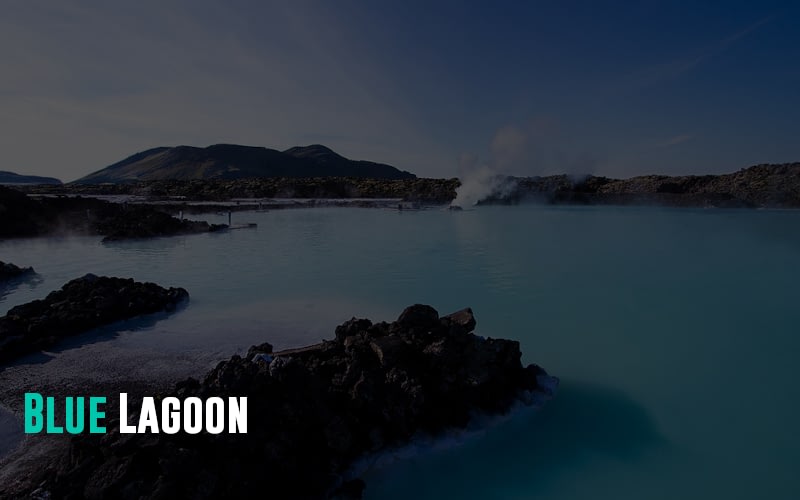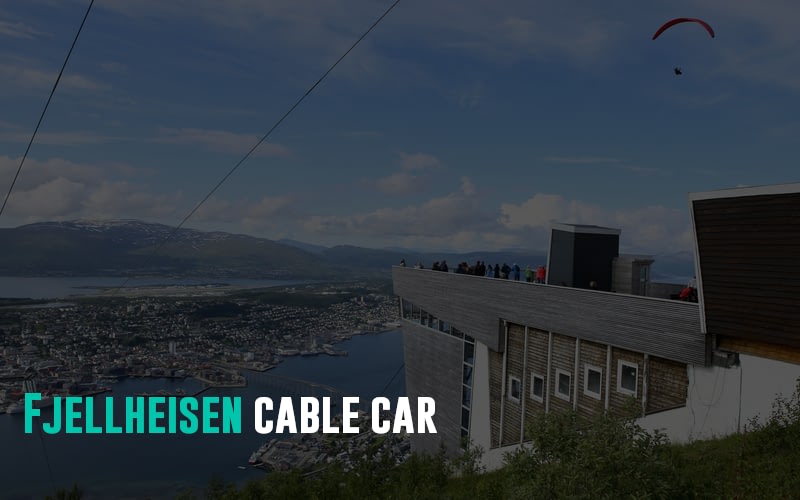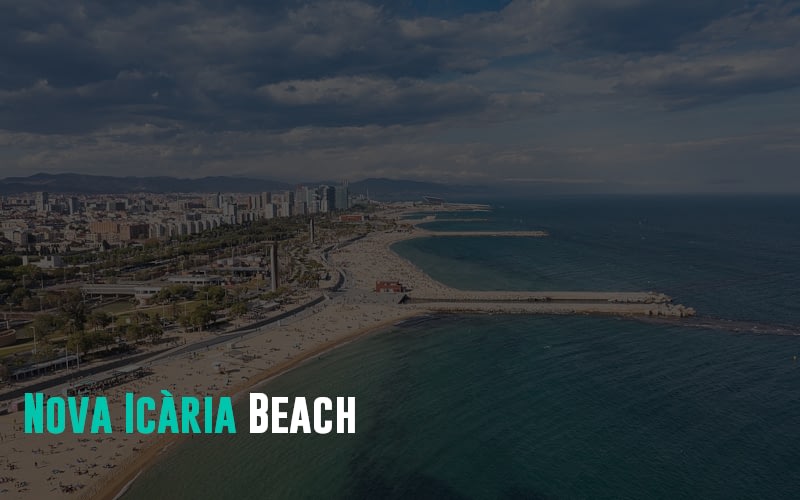Going on a journey to explore new regions is a cherished dream for many. The joy of experiencing fascinating landscapes, enjoying oneself in rich cultures, and creating lifelong memories is incomparable. For those with disabilities, accessibility is crucial to ensuring that these experiences are not only fulfilling but also inclusive. In Europe, several countries have made significant developments to provide disabled-friendly environments, making them ideal destinations for accessible travel. In this blog post, we will discuss the top 7 disabled-friendly countries in Europe and explore their remarkable attractions and facilities. So pack your bags and join us on an unforgettable journey!
Feature Image Source
Destination 1: Lisboa Story Centre in Lisbon, Portugal
Nestled along the Tagus River, Lisbon, Portugal’s capital, offers a rich blend of history, culture, and accessibility. One must-visit attraction for disabled travelers is the Lisboa Story Centre. This interactive museum takes visitors on a journey through the city’s past, uncovering its stories and legends.
Key Points:
- Accessible Entrance: The Lisboa Story Centre provides accessible entrances and ramps, ensuring easy access for wheelchair users and individuals with mobility challenges.
- Elevators and Restrooms: This museum has elevators which assure multi-level access throughout for all types of visitors. Even more than that all restrooms are conveniently accessible.
- Inclusive Exhibits: All exhibits are designed with accessibility in mind providing meaningful interaction for guests with different abilities including visual or hearing impairment.
- Assistance and Support: Well-trained staff members are always available to offer help and guidance thus making sure that disabled individuals enjoy maximum comfort during their stay.
Lisbon provides the groundwork for disabled-accessible travel permitting every visitor to engage themselves into the city’s diverse historical background.
Destination 2: Montparnasse Tower in Paris, France
Paris, the center of romance and elegance, welcomes people with disabilities offering them many places they can visit. One such place is Montparnasse tower which allows its visitors to see the city’s panorama from its observation deck.
Key Points:
- Wheelchair Access: In order to enable comfortable movement around, Montparnasse Tower is completely wheelchair friendly with elevators and ramps.
- Guided Tours and Information: Guided tours for disabled people are available so that they can learn about the past of the tower and enjoy beautiful views.
- Accessibility Amenities: TThe building is equipped with accessible toilets and seating facilities ensuring a comfortable stay for all guests.
- Sensory Accommodations:Audio-visual aids, self-descriptive panels, and Braille are indispensable to visually impaired persons.
While ascending Montparnasse Tower do not forget that it promotes universal accessibility by making sure that no one is left behind when enjoying the romantic City of Lights.
Destination 3: Blue Lagoon, in Reykjavik, Iceland
Iceland’s surreal landscapes and thermal wonders have made it a popular destination among thrill-seeking tourists. Visitors with disabilities can relax at the Blue Lagoon, a geothermal spa famous for its therapeutic mineral-rich waters.
Key Points:
- Accessible Facilities: Wheelchairs allow walking routes, slopes and lifts make it easy for wheelchair users as well as those who face challenges associated with their mobility.
- Wheelchair-Friendly Changing Rooms: Changing rooms have been designed considering needs of people on wheelchairs making them private yet convenient.
- Staff Assistance: Attendants who have specialized in dealing with disabled patients are present thus minimizing risks associated with visiting this place.
- Relaxation and Accessibility: This poolside hoist will help you get into the healing waters of the lagoon without any trouble. At Blue Lagoon everyone can simply unwind and experience the unique geothermal phenomena.
Know that you can fully enjoy yourself in Iceland’s natural wonders at Blue Lagoon, as accessibility is foremost.
Destination 4: Van Gogh Museum in Amsterdam, Netherlands
Amsterdam, with its picturesque canals and charming architecture, captivates visitors from around the world. Disabled travelers can embrace the city’s artistic heritage at the renowned Van Gogh Museum, where the works of the legendary artist come to life.
Key Points:
- Accessibility Features: The Van Gogh Museum offers accessible entrances, elevators, and ramps for wheelchair users and individuals with mobility challenges.
- Audio Guides and Assistive Devices: The museum provides audio guides and assistive listening devices, ensuring a fully immersive experience for visitors with hearing impairments.
- Tactile Models and Multisensory Exhibitions: The museum’s commitment to accessibility is evident through tactile models and multisensory exhibitions, allowing visually impaired visitors to explore Van Gogh’s art through touch and other senses.
- Assistance Dogs: Guide dogs and assistance dogs are welcome throughout the museum, further enhancing the accessibility for disabled visitors.
Immerse yourself in the extraordinary world of Van Gogh, confident in the knowledge that the museum has made every effort to ensure accessibility for all.
Destination 5: Fjellheisen Cable Car in Tromsø, Norway
Tromsø, Norway’s gateway to the Arctic, enchants travelers with its stunning natural landscapes and enthralling Northern Lights displays. Disabled travelers can ascend to new heights by taking a journey on the Fjellheisen Cable Car, which provides breathtaking views of the surrounding mountains and fjords.
Key Points:
- Accessible Facilities: The Fjellheisen Cable Car features fully accessible cabins with ample space for wheelchair users and individuals with mobility challenges.
- Wheelchair Accessibility: The cable car’s boarding platform offers easy access for wheelchair users, ensuring a seamless boarding process.
- Inclusive Experience: The panoramic windows of the cable car allow everyone to soak in the awe-inspiring views, regardless of their mobility status.
- Helpful Staff: Friendly and knowledgeable staff members are present to assist disabled visitors throughout their cable car experience.
Embark on a journey to the skies, admiring the majestic beauty of Tromsø, knowing that accessibility is at the forefront of your adventure.
Destination 6: Colosseum in Rome, Italy
Rome, the Eternal City of Italy, beckons visitors with its rich history, iconic landmarks, and delicious cuisine. Disabled travelers can delve into ancient history at the Colosseum, an architectural marvel that stands as a testament to Rome’s glorious past.
Key Points:
- Disabled Access Tickets: The Colosseum offers special tickets for disabled visitors, providing priority access and ensuring a smooth entry process.
- Wheelchair Accessibility: Ramps and elevators are available throughout the Colosseum, making it accessible for wheelchair users and individuals with mobility challenges.
- Guided Tours: Accessible guided tours are available, allowing disabled visitors to explore the Colosseum’s historic significance and learn about the gladiatorial spectacles that once took place within its walls.
- Rest Areas and Seating: The Colosseum provides rest areas and seating options, ensuring a comfortable visit for all visitors.
Step back in time at the Colosseum, where accessibility and history intertwine, offering an unforgettable experience for disabled travelers.
Destination 7: Nova Icària Beach in Barcelona, Spain
Barcelona, a vibrant city on the Mediterranean coast, delights visitors with its stunning architecture, lively atmosphere, and beautiful beaches. Disabled travelers can bask in the sun and enjoy the inviting waters of Nova Icària Beach, one of Barcelona’s accessible coastal gems.
Key Points:
- Accessible Walkways: Nova Icària Beach offers accessible walkways, ensuring smooth navigation for individuals with mobility challenges.
- Beach Wheelchairs: The beach provides beach wheelchairs, allowing disabled visitors to easily move across the sand and enjoy the waterfront.
- Trained Staff: Knowledgeable staff members are available to assist disabled visitors, ensuring a safe and enjoyable beach experience.
- Ramp Access: The beach offers ramps for wheelchair users, providing access to beachside facilities and amenities.
Relax, soak up the Mediterranean vibes, and let the accessible charm of Nova Icària Beach leave you with unforgettable memories of Barcelona’s coastal beauty.
Fun Facts about these Disabled-Friendly Countries
Now that we have explored the most accessible European countries, let’s figure out some incredible fun facts about them:
- Portugal, home to Lisbon, was the first country in Europe to receive the “Accessible Tourism Destination” award from the World Tourism Organization (WTO) in 2019.
- Paris, known as the “City of Love,” also prides itself on its commitment to accessibility, with many attractions including the iconic Montparnasse Tower providing inclusive options for all.
- Iceland’s Blue Lagoon, a geothermal spa, offers accessible pathways, ramps, and accessible changing rooms, ensuring a relaxing experience for everyone.
- Amsterdam, the capital of the Netherlands, is renowned for its wheelchair-friendly infrastructure, with the Van Gogh Museum leading the charge in making art accessible to all.
- Tromsø, Norway, boasts the Fjellheisen Cable Car, which offers breathtaking views and accessible facilities for wheelchair users and individuals with mobility challenges.
- Rome, a city teeming with history, has taken great strides in making its attractions, including the Colosseum, accessible for disabled travelers.
- Barcelona’s Nova Icària Beach offers accessible walkways, beach wheelchairs, and trained staff dedicated to providing an inclusive beach experience.
Preparing for Travel to these Countries
Planning ahead is key when it comes to ensuring a smooth and enjoyable trip. Here are some essential tips for disabled travelers venturing to these disabled-friendly countries:
- Research and Accessibility Resources: Familiarize yourself with accessible accommodations, transportation options, and attractions at your chosen destinations. Websites like Accessible Travel, Disabled Holidays, and Can Be Done provide comprehensive information to aid in your research.
- Accessibility Requirements: Determine your specific accessibility requirements, whether it’s wheelchair access, hearing or visual impairments, or any other needs. Communicate these requirements to hotels, airlines, and tour operators well in advance to facilitate a comfortable experience.
- Transportation Considerations: Check the accessibility of public transportation options at your destination. Look for wheelchair-accessible taxis, buses, trains, or accessible tour operators who can accommodate your needs.
- Language and Communication: Familiarize yourself with basic phrases in the local language to facilitate communication. Additionally, consider downloading translation apps or carrying a phrasebook to overcome potential language barriers.
- Accessibility Apps and Tools: Utilize smartphone apps and tools designed for disabled travelers, such as AccessAble, Wheelmap, and Google Maps, which offer detailed accessibility information for various locations.
- Travel Insurance: Ensure you have comprehensive travel insurance that covers any specific needs or medical requirements you may have during your trip.
By taking these preparatory steps, you can set yourself up for an unforgettable journey while minimizing potential challenges.
The Best Time to Visit
Timing is everything when it comes to planning your visit to these disabled-friendly countries. Here’s a breakdown of the best time to visit each destination:
- Lisbon, Portugal: Spring (March to May) and Fall (September to October) offer mild temperatures and fewer crowds, making it an ideal time to explore the capital city and visit attractions like the Lisboa Story Centre.
- Paris, France: Spring (April to June) and Fall (September to October) provide pleasant weather and fewer tourists. The Montparnasse Tower observation deck offers breathtaking views of the city, best enjoyed during the quieter seasons.
- Reykjavik, Iceland: Summer (June to August) brings milder temperatures and longer daylight hours, allowing you to fully enjoy the Blue Lagoon and other outdoor attractions in Iceland.
- Amsterdam, Netherlands: Spring (April to May) and Fall (September to October) offer pleasant weather, less rainfall, and fewer crowds. Visit the Van Gogh Museum during these seasons to appreciate the artworks at your own pace.
- Tromsø, Norway: Winter (December to February) is the best time to witness the mesmerizing Northern Lights and ride the accessible Fjellheisen Cable Car, providing a unique and magical experience.
- Rome, Italy: Spring (April to June) and Fall (September to October) offer milder temperatures, making it easier to explore the Colosseum and other historic sites without the scorching heat of summer.
- Barcelona, Spain: Spring (April to June) and Fall (September to November) offer pleasant weather and fewer tourists. Visit Nova Icària Beach during these seasons to enjoy the soft sand and accessible amenities.
By aligning your visit with the optimal time based on climate and tourist activity, you can make the most of your trip to these disabled-friendly European destinations.
Conclusion
As we conclude our exploration of the 7 most disabled-friendly countries in Europe, we hope you feel empowered and inspired to get started on your own accessible adventure. From Lisbon’s Lisboa Story Centre to Barcelona’s Nova Icària Beach, each destination showcases a commitment to ensuring all visitors can experience the richness of Europe’s cultural and natural wonders.
By conducting thorough research, planning ahead, and packing wisely, you can go on a memorable journey filled with remarkable attractions, panoramic views, and warm hospitality. Start your adventure today and unlock the beauty of disabled-friendly countries in Europe.And for those seeking extra assistance and convenience in planning their accessible travels, consider utilizing our innovative AI trip planner. At Travel Wise, our artificial intelligence technology personalizes your itinerary to accommodate specific accessibility needs, providing specific recommendations for accommodations, transportation, and attractions. It’s the perfect companion to ensure a seamless and enjoyable experience as you explore the diverse and welcoming destinations across Europe. Happy travels!

